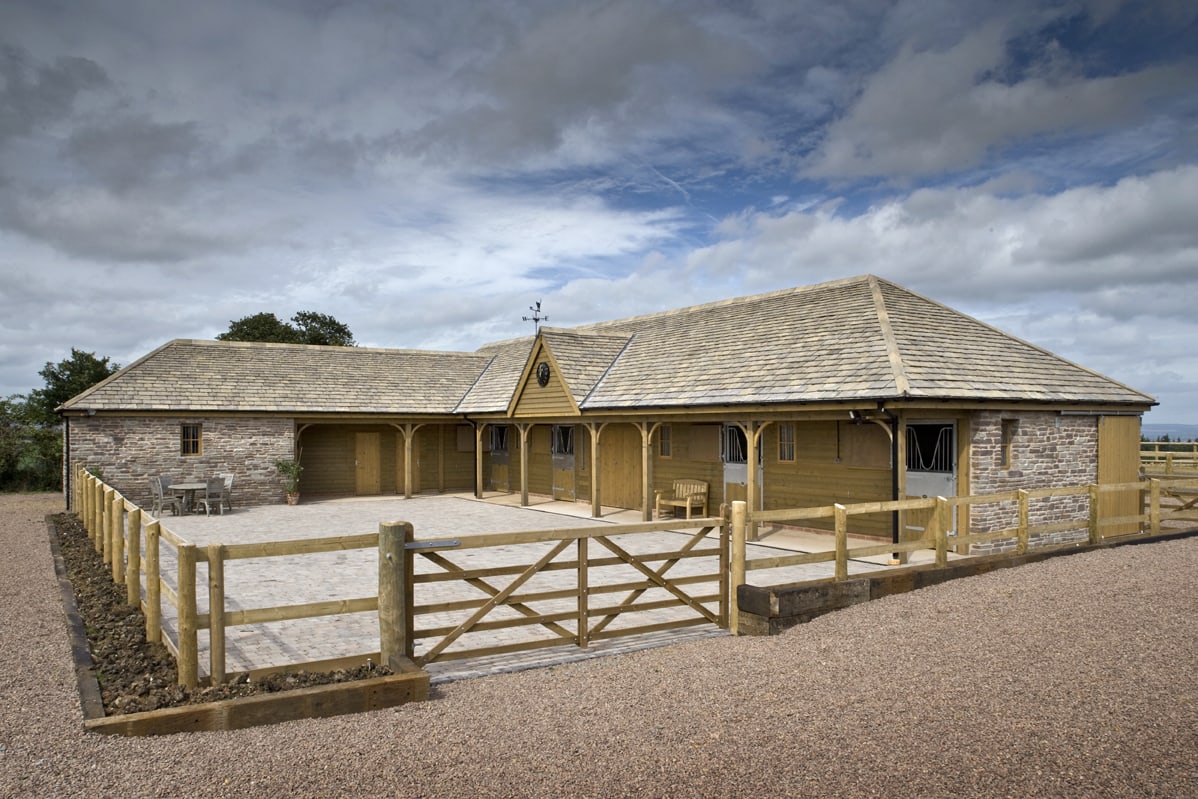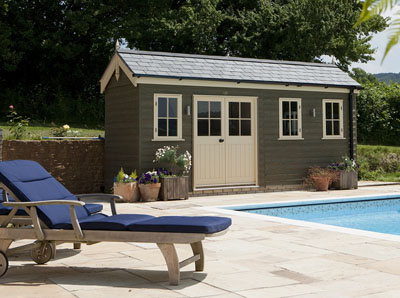If you have a passion for the great outdoors, you may have already noticed the benefits of spending time in the natural world. Whether you like walking in the British countryside or by the coast, there are hundreds of natural phenomena, spectacular sights, and intriguing species to observe. However, the typical British garden, no matter how small can make a home for a fascinating variety of plant and animal life. Whether you have an expansive lawn, tall trees and wide hedges, or a simple courtyard full of pots, you will find life in abundance.
There are so many ways to get involved and help to promote biodiversity across the UK, from garden design to citizen science projects like the RSPB’s Big Garden Birdwatch, Butterfly Conservation’s Big Butterfly Count and the Bumblebee Conservation Trust’s BeeWalk survey. Keep an eye on the BBC’s series of ‘Watches’ (Springwatch and Winterwatch) for ideas on the best way to encourage, support and observe wildlife in your local area.
Mental health charity Mind attests that contact with nature reduces anxiety and stress, boosts your mood and helps people to switch off and relax. A study by the British Ecological Society has recorded how getting involved with citizen science projects helps significantly with their mental health and wellbeing.
All you need is a way to immerse yourself in the wildlife treasures on your doorstep. Installing a summerhouse or garden building in your outdoor space provides access to the natural world in all four seasons. If you are thinking about creating a wild haven, our blog includes some thoughts on what you might want to consider, from the location of your summerhouse to how it’s fitted out.
Blueprint for a wildlife enthusiast’s garden building
Happy place
A number of factors will influence the position of your summerhouse and for maximum contact with the natural world, it makes sense to position it as far away from household (and road) traffic as possible. A peaceful spot near the edge of your garden, away from the house, hidden by a hedge, or in the corner of a smaller plot provides the ideal location. Scotts has designed a corner summerhouse model for precisely this type of location, so you make the most of under-used space.
When choosing the spot, check in with the rules around permitted development in your area and you should be able to avoid an application for planning permission. Regulations are not the same everywhere and local planning authorities will advise, so always check before making your decision.
Think about the view from your summerhouse and the perspective you will establish on your garden. Place a deck chair in the place where you plan to build and spend some time taking a careful look. Watch the position of sun and notice how the light and shadow changes through the day. Become acclimatised to the behaviour of birds and animals. Get as close as you can to the areas they visit most often, without disturbing them. Or line up the summerhouse along the best sight lines for your binoculars.
If you’re tracking wildlife, the best view is not necessarily an open vista. Sitting close to trees and hedges will bring you closer to insect life, and there’s always plenty of activity going on in the pond. Be careful not to site your summerhouse too close to foliage and overhanging trees as debris from these could cause damage or simply create a mess.
Room to grow
What is the best type of garden building for a lover of wildlife? Ideally, your summerhouse will blend with the natural world and become a feature that complements the planting, enabling wildlife to flourish undisturbed.
Natural wood works well but if you’re looking for a premium quality building, Scotts’ summerhouses are painted in a long-lasting high-quality finish with a choice of natural colours. In the Scotts palette, perhaps you will prefer the gentle and subtle Putty, Duck Egg or Birch colour finishes for your summerhouse. Your choice of colour will be influenced by the style of your property and the type of outdoor planting you favour.
All summerhouses require a firm, level base and you can create this from a range of materials. A ground screw base represents a convenient and highly eco-friendly option that requires no digging and doesn’t contaminate the sub-soil. Picture giant wood screws topped with a timber frame and your summerhouse will remain level and steady, even in a sloping garden.
If you envisage spending time bird watching from your garden building, choose a model with multiple viewpoints such as an octagonal summerhouse, or a garden room with expansive windows that provide a wide perspective. Birds and animals are usually easier to observe during the winter months before the leaves return to the trees.
If you’re planning to spend time sitting quietly in your garden building when it’s chilly outside, think about including double glazing and insulation in your brief. Scotts installs double glazing made from low E energy saving glass, and insulation is securely fastened within tongue and groove effect lining. Lockable doors are a must if you plan to keep valuables inside such as a telescope or electronic equipment. Take these items indoors if you are going away or not using your summerhouse on a daily basis.
Fabulous features
Setting yourself up as a wildlife observer, painter or photographer couldn’t be easier with your very own garden base. Make sure you have a comfortable seat with cosy woollen or fleece wraps and a sheepskin rug to keep your warm in the cooler months. Your seat can be free standing allowing you to change position, or you could choose modular seating that dovetails perfectly with the angles of your summerhouse walls. It, too, can be moved around as needed and has the additional advantage of doubling up as a storage unit so you can lift the lid and take out your sketch book and pencils, or your binoculars.
For extra storage, Scotts summerhouses offer the option of a shelf feature that is cleverly constructed to maximise use of space. Without losing space inside your summerhouse, you will have somewhere to stack your bird books and those essential refreshments.
If you really can’t decide on the best view or have feeders and water features on different sides of the garden, think about installing a rotating base that gently swings around enabling you to enjoy every aspect.
Some of the best spectacles of nature are visible at dusk from watching the sunset, identifying the constellations, to counting the bats or tracking a barn owl. Ensure that you can access your garden building when it’s dark by installing electric power or smart devices that can be recharged indoors. Scotts offer a solarhub that harnesses the power of the sun’s heat, enabling you to reduce your carbon footprint.
If you really want to make a contribution to biodiversity, you might want to install a sedum or green roof for your garden building. This will cover the roof with vegetation which is planted on top of a waterproof membrane. Flowering sedum plants require very little maintenance and stand up well to very dry or even frosty conditions.
Surrounding area
Think about how you will design the outside space immediately around your summerhouse to encourage wildlife to thrive in front of your eyes. There are many resources that recommend the best types of garden design to boost the natural world from starting a plot from scratch to identifying the plants that birds, bees and butterflies love most.
Butterflies are attracted to buddleia, wallflowers and lavender, bees enjoy alliums, cornflowers, marigolds and geraniums, and planting herbs such as rosemary, sage and mint is good news for all types of insects. Leaving an area of your garden un-tended is an increasingly popular way to boost biodiversity. Why not create a wildflower meadow in small area or follow the guidance of Plantlife’s No Mow May campaign to help the pollinators and leave the lawnmower in the shed for a month.
Lay down a path to your summerhouse so that you can access it in all weathers, and make sure there is an outdoor area where you can set yourself up on the deck when it’s warm.
Bring life to the prospect from your summerhouse by opening a bee hotel, setting up a bird feeding station or creating a pond, no matter how small. A watertight container with a layer of rocks and gravel, filled with rainwater, and a miniature waterlily, spearwort or starwort will provide the perfect home for a galaxy of invertebrates.
Hedgehogs are in decline all over the UK and the best to help them is to create gaps in hedges and holes in fences so that they can access a range of habitats. Resist the temptation to clear away leaf litter in the autumn and instead leave it for creatures such as hedgehogs to use as bedding when they hibernate. Make sure that there is always clean drinking water available for garden visitors of all varieties.
A compost heap fosters insect and invertebrate life enabling spiders, woodlice, and worms to thrive, providing a vital link in the food chain for birds and mammals.
Decor decisions
You have decided on the structure, position, materials, and features for your perfect wildlife-watching summerhouse. Let’s go inside again and turn out attention to the interior décor.
Create a simple, uncluttered ambience using natural materials from cork and bamboo, to wool, cotton, and sustainable upholstery fabrics. Scotts offer loose backrest and scatter cushions in eco-friendly Wave Rose and Blossoms colourways.
Or choose from prints that reflect the intricate patterns of flowers and leaves such as William Morris Willowbough or Sanderson Paradesia in Orchid Grey. Add a flooring option that keeps noise levels low and increases your comfort. Scotts’ optional floor covering is made from woven vinyl that delivers the texture of sisal and seagrass and is warm underfoot.
Adorn the walls with prints or canvases made from your best wildlife photos, or hang a wallchart so help with species identification.
Challenge our design team!
Scotts is always happy to work on a personalised brief for a dream summerhouse and we can accommodate special features that will enhance your enjoyment of your garden. Add wide, narrow openings or hatches into the walls so you can keep an eye on the birds discretely. You may prefer to have windows on every elevation of your garden building to maximise the light and boost your view. Or perhaps you want to relax, lie back, and watch stars wheeling overhead through a glass roof.
Whatever your vision, we can help to enhance your experience of enjoying the wildlife that abounds in UK gardens. Contact the team and tell us what you enjoy most about your garden so we can advise on the best type of summerhouse model, and the additional features that will bring your experience to life.










